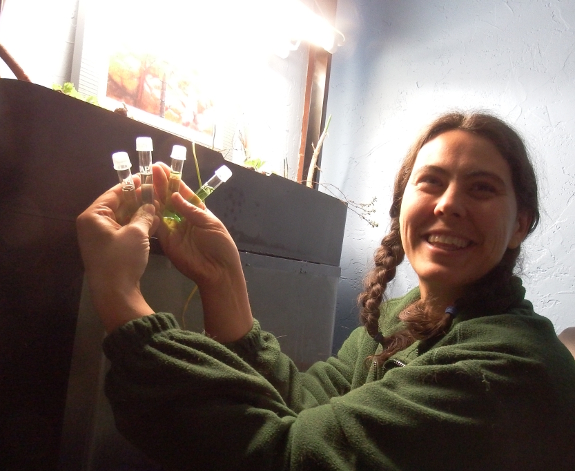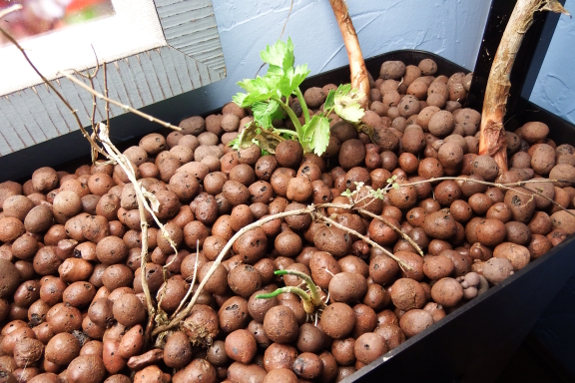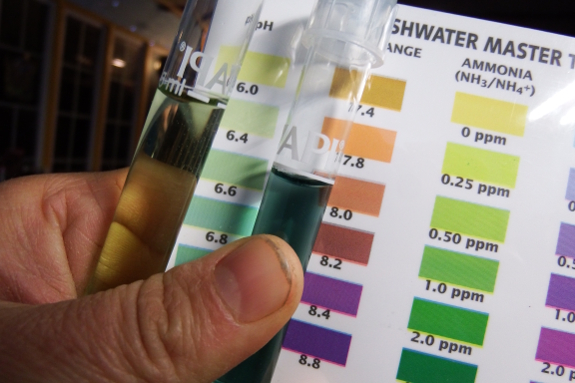
Cycling an aquaponics tank with pee

Even though we
started with a kit,
no aquaponics system is truly plug and play. Instead, you have to build
up handy bacteria to change fish waste (ammonia) into the form of
nitrogen plants can use (nitrate). While you can do this by putting some fish
in your tank and hoping the bacteria will grow faster than their poop
will build up, most folks cycle the tank using chemistry instead.

Cycling is pretty
simple. Basically, you set up both your tank and grow bed (with pump
running), then you add a source of ammonia to bring the content of the
water up to 4 to 6 ppm. After that, it's just a waiting game while the
bacteria accumulate and do their job.
So where do you get
ammonia? Supposedly, you can buy it in the cleaning section of some
stores...but it's hard to find straight stuff without dyes, perfumes,
and soaps. I went for the cheaper approach --- aged pee.

(This picture actually
portrays a pH test. But let's pretend, shall we?)
Half a cup of aged pee
in a ten-gallon aquarium actually overshot the mark a bit, hitting 8
ppm. I could have changed out a bit of the water to bring the aquarium
back into balance, but I also had another ace up my sleeve --- a quart
of wild pond water added to the mix.
I figure seeding some
beneficial microorganisms might let me get away with higher ammonia
levels than are really recommended. Hopefully the pond water will also
lower the usual cycling time of three to six weeks too. The sooner I
can add fish, the better!
Want more in-depth information? Browse through our books.
Or explore more posts by date or by subject.
About us: Anna Hess and Mark Hamilton spent over a decade living self-sufficiently in the mountains of Virginia before moving north to start over from scratch in the foothills of Ohio. They've experimented with permaculture, no-till gardening, trailersteading, home-based microbusinesses and much more, writing about their adventures in both blogs and books.
Want to be notified when new comments are posted on this page? Click on the RSS button after you add a comment to subscribe to the comment feed, or simply check the box beside "email replies to me" while writing your comment.

What kind of plants do you expect to be raising in your new aquaponics tank and what fish are you planning on putting in?
A neighbor of mine is experimenting with this although on a much larger scale. He purchased a 150 gallon tank (the kind they use to water stock out in the field) and was thinking of raising either talapia or catfish in the tank. I think he's going with catfish as talapia apparently is finicky as far as temperature is concerned. He wants to not only be able to eat veggies but fish as well.